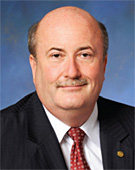
A lot of people who read this column spend their days looking for the next safety threat to their airline, their flight, their maintenance shop or so on, focused on the micro level. I guess my contribution is to look for broader safety threats to the industry, a macro view. Let me see if I can describe such a threat that many may not see coming.
We got a glimpse of the gathering storm recently with the LightSquared debacle in the United States. This is a political disaster of epic proportions that I don’t want to get in the middle of, but I’ll try to summarize the situation. Basically, a really big company spent billions of dollars getting government approval to deploy a new wireless mobile broadband network in a frequency band near the global positioning system signal space. On paper, the company thought it worked, but when tested with existing receivers in the real world, it didn’t. Politicians and lawyers probably will spend the next decade figuring out what went wrong and who pays.
This mess should remind us that the global aviation industry depends on telecommunications, and we are hanging onto a massive amount of incredibly valuable radio spectrum. It is almost impossible to conceive how valuable this spectrum is. But consider this possibility: The spectrum we hold may well be worth more than the value of the entire global aviation industry. I am talking trillions of dollars. Every time somebody creates a new broadband app, or a teenager runs up her phone bill texting, the value of that spectrum goes up. The LightSquared case serves as a warning.
Our spectrum is becoming incredibly valuable, and at some point we will not be able to hang onto it.
Of course nobody wants aviation to go away. But patience is wearing thin. If we moved all of our avionics to a modern digital standard, we could have a better and safer system than we have today while likely using only a few percent of the spectrum band presently allocated to aviation. This is especially true for voice communication. The bad news is that efforts to move from analog to digital over the last few decades have been blocked by bickering countries, competing engineers and the next best idea. The U.S. NextGen and European SESAR programs re-inventing air traffic control technology would normally be the place to look for a solution, but right now those programs are struggling with massive budget cuts and fiscal uncertainty. Bold new digital standards and 20-year transition plans are not likely to be at the front of their agenda.
So there lies the safety threat that reaches beyond crowded airport frequency congestion. We are about a decade late starting transition to a new aviation communication digital standard that does not yet exist. To keep the system safe, the right technologies have to be identified and the transition carefully planned. Efforts to do that during better times have failed. If we are lucky, the global aviation industry may get one more chance to chart its own course through this transition. If we don’t, the rest of the world, hungry for more frequencies, will force the change upon us; the economic cost of inaction will be unbearable.
To transition safely, we have to end the gridlock now. It would be a good time for somebody to lead.
